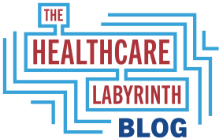While website postings of hospital and health plan negotiated prices may not seem of particular importance, the nation’s modest move toward price transparency should bear fruit over time. It is one of the more important initiatives we have seen in healthcare reform as of late. With interoperability of data, price transparency will finally give us some useful information on the inner workings (even machinations) of negotiations between health plans and providers.
What are the price transparency requirements?
Both health plans (effective July 1, 2022) and hospitals (effective January 1, 2021) have been required to post various pricing information on their websites.
Hospitals must report all their gross and net charges in a machine-readable format as well as at least 300 shoppable services (cash and payer prices) in a consumer-friendly format.
Health plans must report allowed amounts and contracted rates for hospitals and other provider services for all in-network covered services and billed charges and allowed amounts for out-of-network providers. In addition, plans are required to have a personalized pricing and cost-sharing estimator for the 500 most frequent services.
Some of the initial rules were clarified as parties went out of their way to delay posting the data or make mining of the information difficult. Major penalties could apply to both plans and hospitals if they subvert the rule.
Since a great deal of what has been disclosed relates to hospitals, a good rule of thumb is that inpatient hospital spending represents about one-third of all spending nationwide each year in the healthcare system. In the case of employer coverage, the percentage spent on inpatient hospital is about 20%. In Medicare, it is about 30%.
What have we learned so far from the public files placed on various health plan and hospital websites? I combed the universe of various analyses so far and generally found these conclusions.
- Compliance among hospitals is very low – perhaps one in four.
- Nonetheless, there are huge stores of data that have been posted by health plans and hospitals. This includes both gross and net prices (after discounts) paid by plans to hospitals.
- By and large, because of how the data are reported and uploaded, the average consumer cannot really use the data.
- While health plans have a standardized schema they must follow, hospitals initially did not. That should change with some refined hospital regulations that will go into effect.
- There is some evidence that the data are not always accurate and even that hospital- and plan-posted data conflict. In some cases, the loaded files do not always tie all the data together correctly. Fields are not intuitive. The Centers for Medicare and Medicaid Services (CMS) does not really perform any quality control. The agency seeks to penalize entities if they are not compliant in posting, but usually not if the posted files have problems or are inaccurate.
- The rule does not require the posting of everything right now, so if you could decipher costs it may not be complete. For the health plan portion, data are much more available for in-network activities rather than out-of-network.
- Even academics and researchers have trouble analyzing the data. There are so many different types of reimbursement and calculations that need to be made in paying a claim for services. For example, in the hospital world, there are DRGs vs. per diems vs. other reimbursement types. There are even combinations of the aforementioned. Dollars as well as percentages sometimes are necessary to calculate fees and appear in the file with little information. Sometimes CPT codes, modifiers, diagnoses, and risk/severity enter the picture. Hospitals can have hundreds of line items for a given stay. In the hospital data, sometimes it is hard to tell what rate applies to what market and health plan. It also is hard to know whether something is inpatient or outpatient and whether a charge is for a facility or professional. It can be hard to tell what reimbursement type is applicable as well.
- Even if you could read one hospital’s given rates, there is no easy way to compare those prices to another hospital’s – at least not yet. The same can be said for other services in the health plan data. And consumers are hobbled by the fact that they would need to thoroughly understand their cost-sharing requirements to understand the true impact on them (although generally, lower cost providers would mean lower out-of-pocket costs).
- About 12% of healthcare encounters involve a hospital, and half of those are emergency visits that likely would not be researched or cost compared beforehand (except perhaps by the most morbid of us). So, while hospitals have among the highest costs, other areas need price transparency too. Health plans have to report this data but most of the attention has been placed on hospitals.
- Some innovative entities are able to read and analyze the data to the best of their ability and are developing new price transparency tools, independent of health plans proper. This could begin to shed light on the universe of pricing data in the near term.
- Actual rates paid by health plans to hospitals are a fraction of the so-called chargemaster or billed charges. Both chargemaster and negotiated rates for inpatient and outpatient services vary dramatically.
- If Medicare fee-for-service (FFS) inpatient rates are a barometer of reasonable reimbursement based on costs, sources suggest that the pricing data shows commercial rates are on average between 200% and 250% above Medicare – showing the crying need for price reform in the system.
- Based on both plan and hospital data, there is a wide disparity in hospital rates between regions of the country. This tends to mirror actual spending in healthcare overall. For example, the northwestern United States tends to have very low overall spending and rates, while other regions, including South Florida, have very high spending and rates. This was relatively well-known from published healthcare data, including Medicare data.
- Hospital rates also tend to differ significantly even within regions, which is something that was not as well known before. There can be sizeable differences among rates paid to hospitals by health plans in such regions.
- And last, it is also true that each health plan in a given region may pay different rates to hospitals. This in part may be due to the relationship the plan has with the hospital and affiliated providers. But it likely does not explain all of the difference.
So let’s try to summarize what we know. Prices can be many fold higher at a hospital in one region of the country than another. Prices can be measurably higher at one hospital versus another even in the same region. Finally, one health plan could have a dramatically different price at one hospital than another plan.
One clear thing we know from the price transparency rules so far is that hospital pricing and for that matter prices in many other areas of healthcare are arbitrary. Hospitals and other providers start from a chargemaster price or billed rate that is not rooted in any true cost. These rates are often used simply to negotiate with health plans as to a discount. But such chargemaster and billed rates tend to harm the system in many ways. They are extremely inflationary by nature. Providers tend to add to their already outrageous chargemasters or billed rates annually to get the best increase in discounted prices possible. Available data indicates that hospital pricing is the most inflationary of service types, save for certain drugs the last few years.
But consumers get hurt here, too, in a few ways. Because rates between hospitals vary dramatically by plan, one enrollee at health plan A could pay considerably more cost-sharing than an enrollee at the same hospital in health plan B. Even members of the same plan have the issue. Member C going to hospital D could pay far more cost-sharing than member E going to hospital F. The consumer is sometimes none the wiser until the bill is received in the mail. And often the choice of hospital is not within the control of the patient. It often is the doctor who has favorite places to practice or is owned or closely-affiliated with a given hospital.
An uninured American or someone in an out-of-network situation often is charged the chargemaster or billed rate. He or she does not get the advantage of discounted negotiated by health plans. While the No Surprises Act (NSA) has stopped some outrageous out-of-network billing, some still exist. He or she cannot possibly afford the fee.
In the end, I support the price transparency rules that have gone into effect. Yes, they are inadequate and will be subject to gaming for years to come. But for the first time, with the help of some savvy technologists and experts, we will have a glimpse into the dirty world of price in our healthcare system. Hospitals and health plans argued that the sky would fall if the rules went into effect. It would cripple competitiveness and actually lead to higher prices. But the rules themselves did not lead to higher prices. If anything, it did lead to some head-scratching at health plans and I guess hospitals about what they did or did not negotiate.
In my book, The Healthcare Labyrinth (available for purchase at right), I argue that a private delivery system will deliver the best quality in America. But I also argue that what America needs are prices that are set uniformly by region and are the same across health plans – at least in various lines of business (commercial, Medicare and Medicaid) and perhaps across lines of business (to reduce the cost-shift from Medicaid and Medicare to commercial that occurs via pricing). We do this in the Medicare and Medicaid fee-for-service (FFS) systems today. This would reduce confusion and the huge administrative costs we have today.
The fact is that uniform price setting is practiced in all three types of systems in the developed world – socialized healthcare (the state finances, runs, and primarily delivers care), single payer (where the state finances and runs the system, but delivery is largely private), and private affordable universal access (where the state regulates and ensures affordable access, but private entities run and deliver care). In this last version, plans compete not on who can reduce excessive pricing, but on efficiency and quality of care as well as customer satisfaction. Indeed, in studies of outcomes in developed countries, each healthcare delivery type scores at the top of the pack because the systems are focused on the right goals of healthcare.
So, the prices being reported by hospitals and health plans are not clear, accurate or accessible. But celebrate the price transparency rules anyway – no matter how infantile the current rules may seem to be. In the short and medium term, the data might transform how hospitals and health plans think of price. With data available, they could evolve a rather mature pricing strategy for once and refocus on value and efficiency. Plans and hospitals may also begin to meaningfully engage consumers on price and more. This seems to be an emerging trend. In the long run, clearer data mined by the smart guys may better shine a light on the absurdity of our pricing system and lead to change, including uniform pricing.
#pricetransparency #hospitals #healthplans #cms #interoperability
— Marc S. Ryan





